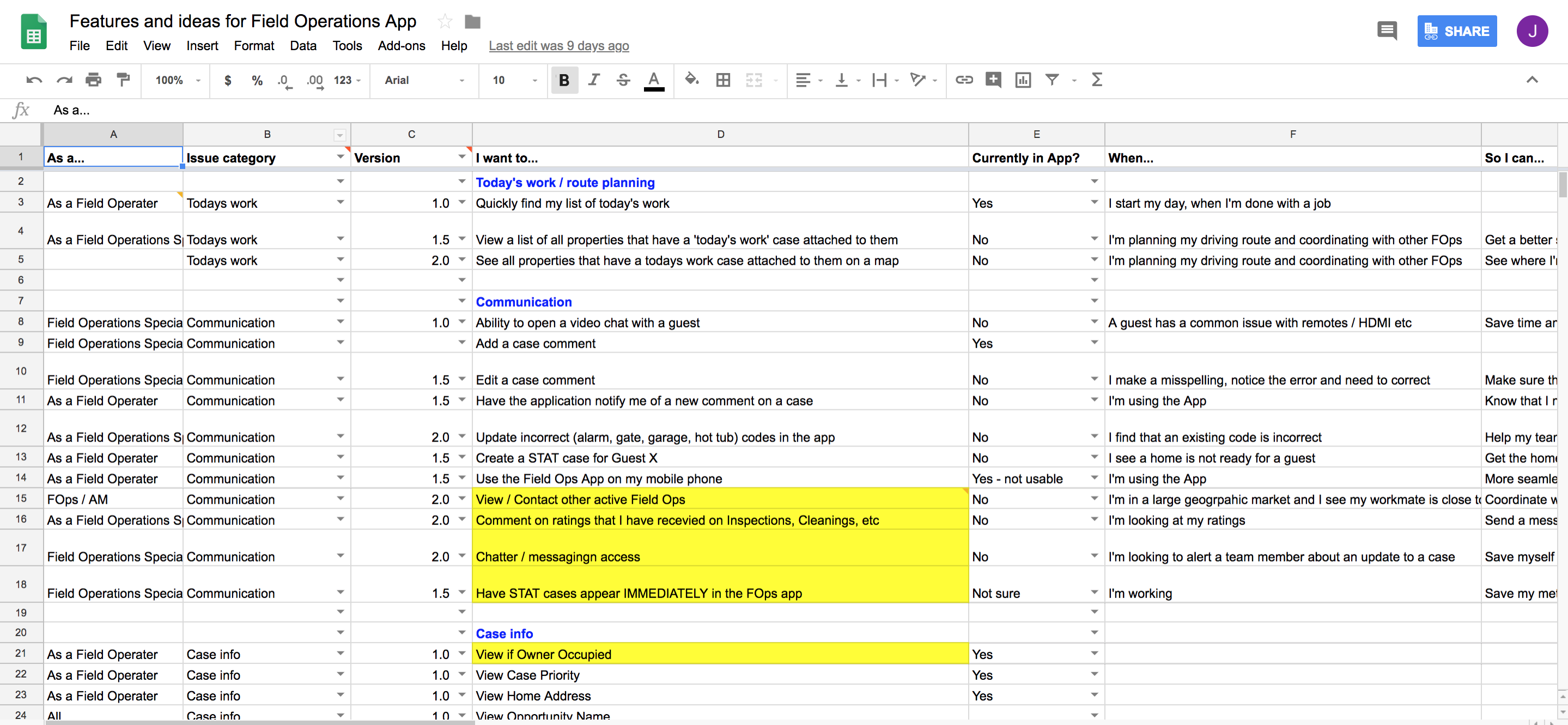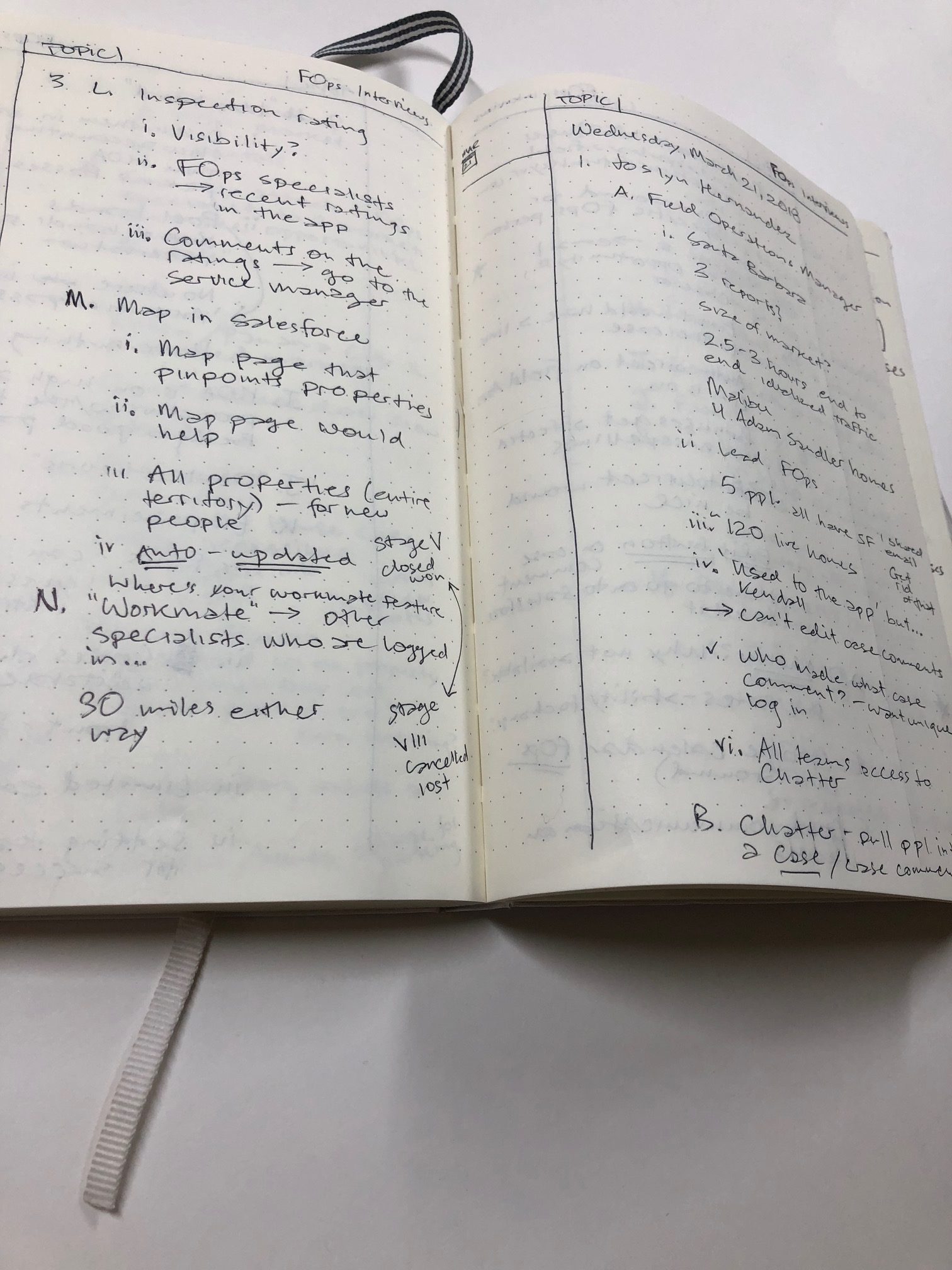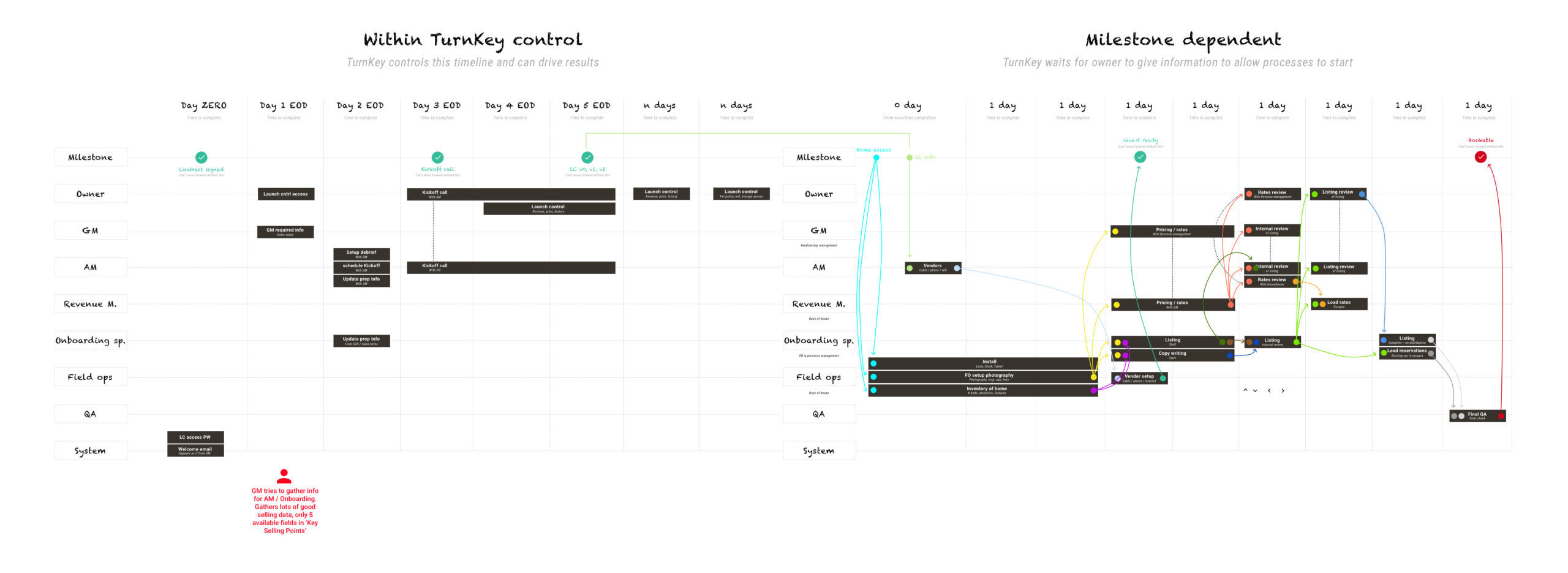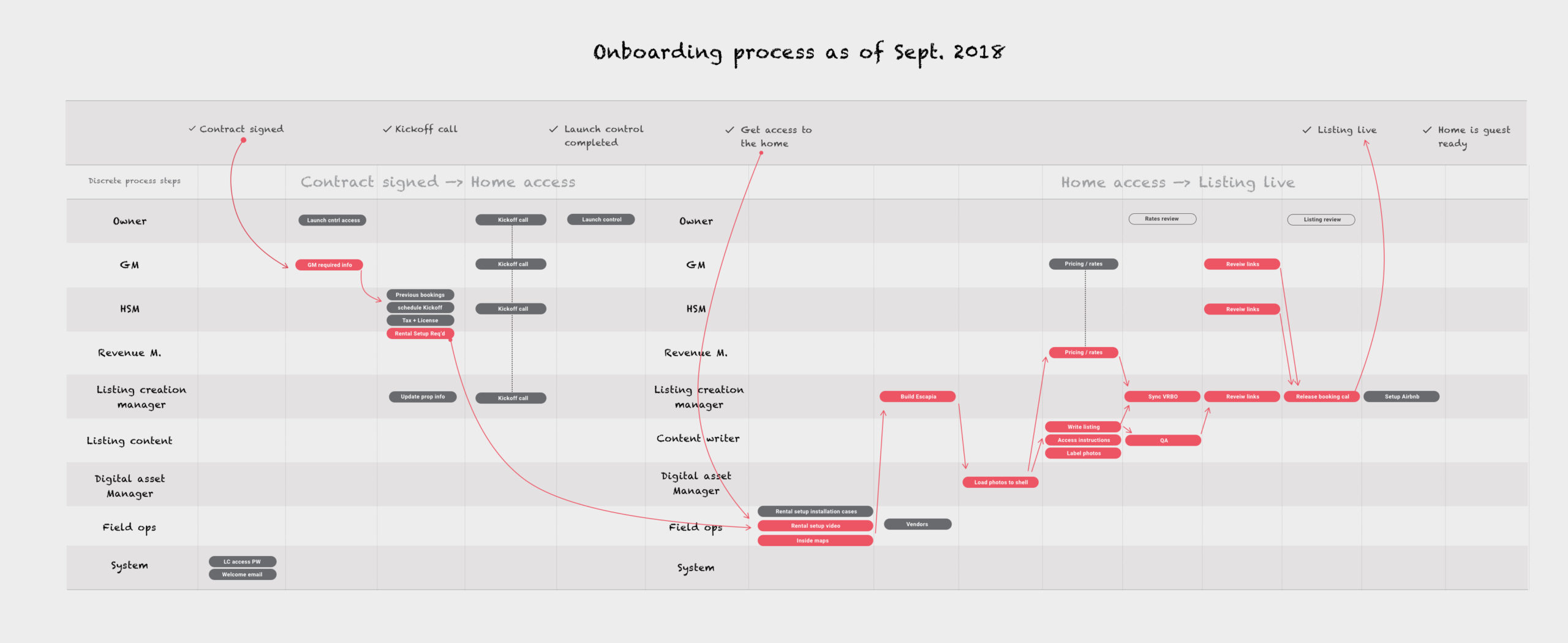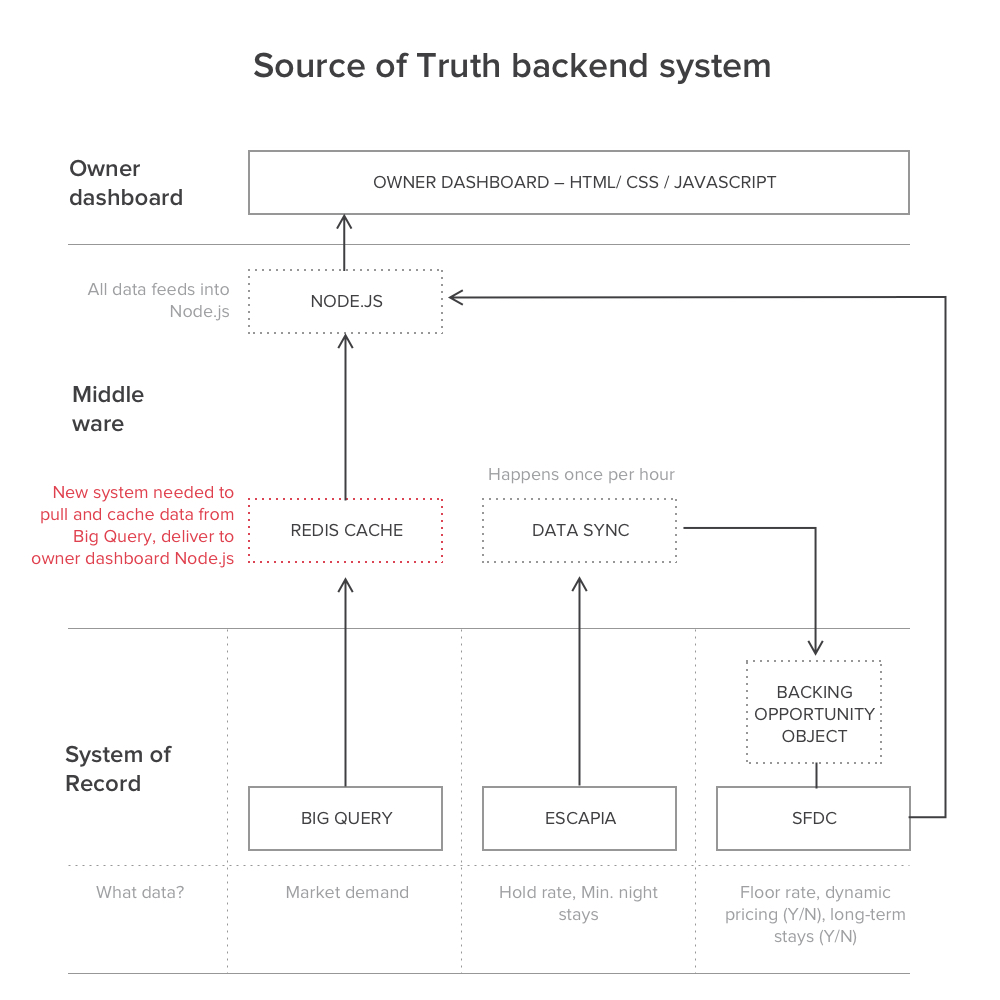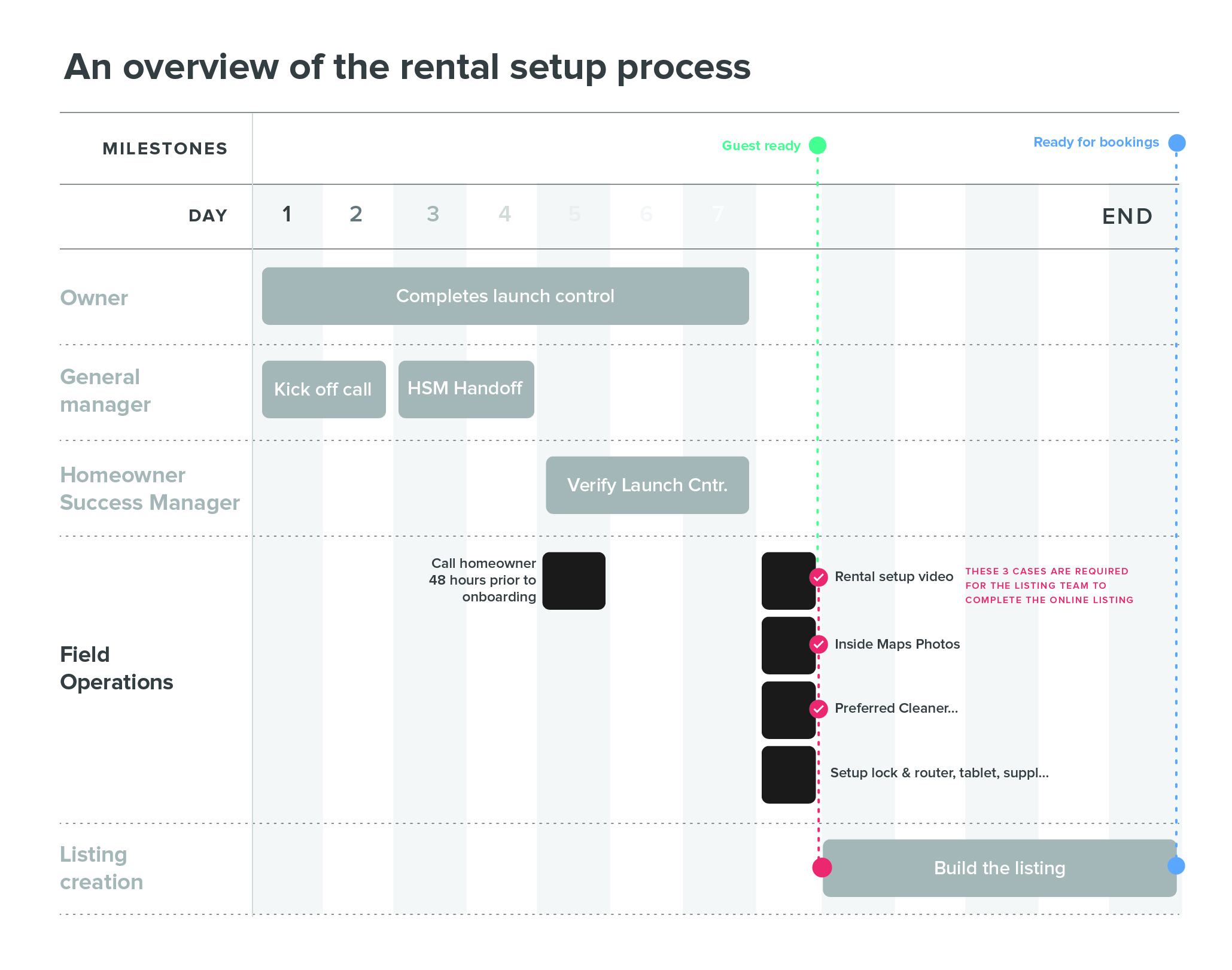
Logistics coordination app
TurnKey Vacation Rentals is a national, full-service property management company with 3,500 homes under management. I led the effort to design an application to help their field team be more efficient, resulting in a industry-leading guest NPS score of fifty-five.
CompanyTurnKey Vacation RentalsYear2016RoleResearch, user stories, wireframes, prototypes, high-fidelity mock-ups, and testing with original team
Problem
21CT was helping fraud investigators work to detect Medicare fraud. The team had built an impressive system that used AI to find networks of bad actors. What was missing was a way for investigators to save progress in an investigation inside the system.
Heuristics
- Visibility of system status – Given the large datasets being searched, it was important to let users know when the system was thinking and what they could expect from a search or a save
- Meet users where they are – The Medicare fraud space had a particular set of terminology
- Help and documentation – Terminology needed precise definitions readily available to the investigative team
- Recognition rather than recall – We wanted to lower the amount of information that investigators needed to keep in their head (or on separate notes outside of the system)
Solution overview
Primacy of user goals
Our main user profile for the owner dashboard is an owner of a vacation rental.
Revenue is a big motivation for a large percentage of owners.
Additionally, being able to create a ‘case’ and assign work to TurnKey is another important task.
100,000+
Room nights serviced with app
20,000+
Number of home visits completed with app
55
TurnKey guest NPS score
The app welcome screen
Field specialists can verify room cleanliness
Each room in a home has tasks associated with it
We helped our team be successful with exit checklists
How I start to make sense of the mess
(A nod to my favorite IA book of all time. Thank you, Abby Covert)
During formation, we look to create alignment between business goals, user needs, available resources etc.
I’m an obsessive note taker 🙂 Over the years, my note taking style has evolved. As I have meetings with different stakeholders, I use a highly structured format as way of beginning the process of organizing information.
This helps recall, begins the sense-making process, and makes it easy to retrieve information at a later date.
* studies show that taking notes by hand improves recall and using a structure additionally helps.
Research involves lots of conversations with users. We start with the current state - how are things done/goals accomplished right now?
At Turnkey, the onboarding process and maintenance for vacation rentals could be complex and span weeks or months. A customer journey map or service blueprint was an important foundational document to come out of the research phase.
These documents gave us visibility into what people were trying to accomplish, why they wanted it, and how they were achieving it given a resource-constrained environment (IE no app, or poor tooling).
With a high volume of turns, efficiency was key for TurnKey's field teams and profit margins. Current tools did not support this.
With such a high volume of check-in and check-outs, TurnKey’s field teams need applications that can help them be as efficient as possible.
Prior versions of this application had poor usability, leading to inefficiency, waste and uncompleted tasks. Critical issues at the home often need to be addressed before the guest arrives. Without an easy-to-use interface, issues were being missed. This resulted in a sub-optimal guest experience, and reduced efficiency that lowered profit margins.
Vacation rental hospitality requires a complex chain of services. For this reason, journey maps were a critical first step for understanding the problem.
This swimlane diagram shows various tasks done across time by the TurnKey home service team for a standardized home onboarding process
Shadow sessions with the hospitality team helped illuminate issues.
With the issue identified by the business, I worked closely with product managers and the head of TurnKey’s technology team to develop the concept for the application.
After a shadow session to watch the home service team at work, I got to work on mockups. With time pressure from the business to get this out to the team, I used a Google Material visual style guide to design 100+ screens in a matter of days.
We mapped products requirements to our understanding of the service delivery model, and from speaking with the hospitality team. From there, we began working on a cohesive application design.
Usability and system clarity were key to helping team members deliver industry-leading service.
This application needed to allow field specialists to "master the basics" of good hospitality—mainly, making sure that homes were clean, issue free and ready for guests.
This app helped TurnKey scale and effectively manage 100% growth in markets, property, and personnel—while maintaining high standards of service.
With release and testing done, we kept an eye on feedback coming in from users across the country. With over two years of usage, 100,000 room nights handled, great feedback, and a stellar guest NPS rating, the product team considers this app (and the resulting outcome) one of our crowning achievements.
In the end, our field specialists were the reason for Turnkey's success. It was fun getting to know their work, and I was proud to build something they happily used on a daily basis.
I led the research, requirements, prototyping and design of an app for an internal team
CompanyTurnKey Vacation RentalsYear2016RoleResearch, user stories, wireframes, prototypes, high-fidelity mock-ups, and testing with original team


